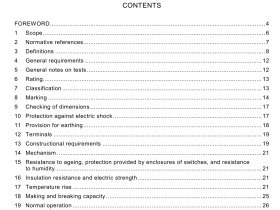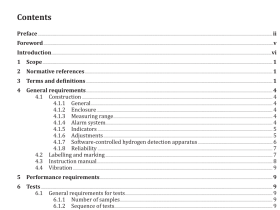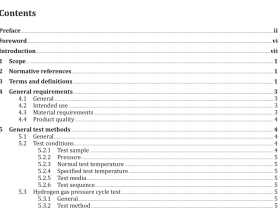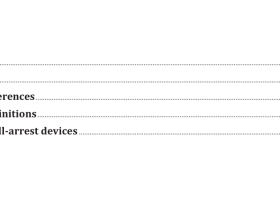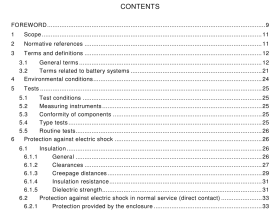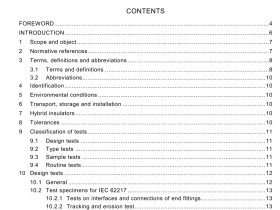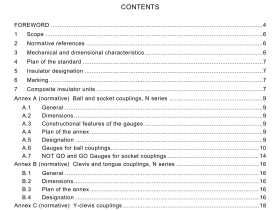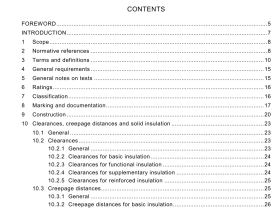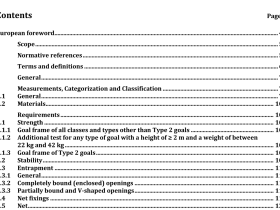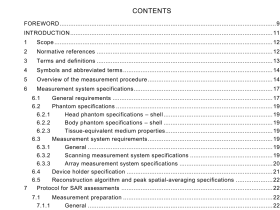AS 1892.5 pdf download
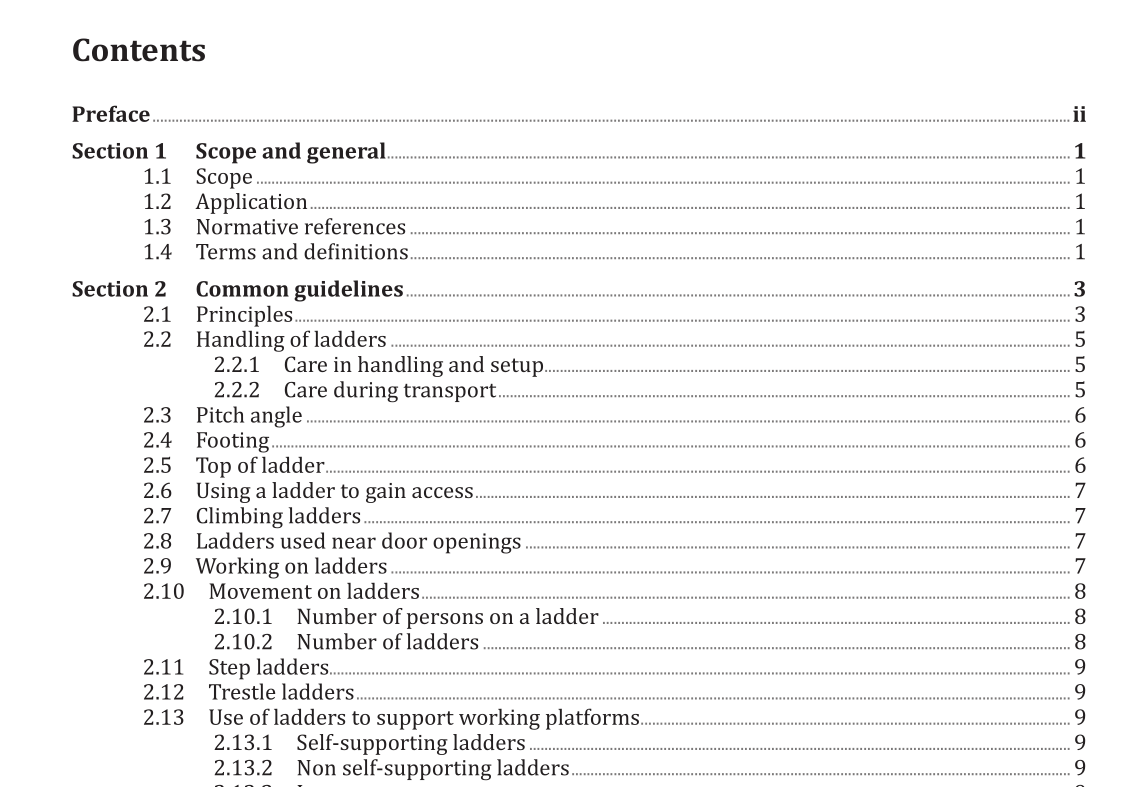
AS 1892.5 pdf download.Portable ladders
1.1 Scope
This Standard sets out the minimum requirements and recommended safe practices for the selection, use and maintenance of portable ladders. The requirements of this Standard need not apply where safe work procedures that are equivalent or superior to this Standard are in place.
1.2 Application
General recommendations common to the selection, use and maintenance of portable ladders are given in Section 2, while specific recommendations and requirements for ladders predominantly constructed from a particular material are given in the following Sections: (a) Metal ladders, see Section 3. (b) Non-metal ladders, see Section 4. [C) Timber ladders, see Section 5. Section 2 shall be read in conjunction with the relevant Section relating to the type of ladder being used.
1.3 Normative references
There are no normative references in this document. NOTE Documents referenced for informative purposes are listed in the Bibliography.
1.4 Terms and definitions
For the purposes of this document, the following terms and definitions apply. 1.4.1 competent person person who has acquired through training, qualifications or experience, or a combination of these, the knowledge and skills enabling that person to perform a specified task 1.4.2 may indicates the existence of an option shall indicates that a statement is mandatory 1.4.4 should indicates a recommendation
2.2 Handling of ladders
2.2.1 Care in handling and setup Ladders should not be dropped, jarred or misused. Before a ladder is to be raised, lowered or carried, risks associated with the task should be assessed. These risks include the following: (a )Slope, strength and friction of the supporting surface. (b) Height and reach required (c) Environmental conditions. (d) Work areas, e.g. adequate space available to handle and set up the ladder. (d) Manual handling. (e) Potential for contact with persons or objects within the swing or fall radius of the ladder. A device to assist or more than one person may be needed to handle and set up the ladder. The ladder should remain under the control of the person or persons handling the ladder at all times. When a ladder is being raised, lowered or carried, encroachment of any exclusion zones, such as distance to powerlines, and contact with any person or object in the vicinity, should be avoided. . 2.2.2 Care during transport Where a ladder is being transported by a vehicle, including push carts or trolleys, the ladder should be supported to avoid sagging. Overhang of the ladder beyond supporting points should be limited. Ladder supports should be made of material that will not damage the ladder and has enough friction to prevent sliding, e.g. wood or rubber-covered metal. The ladder should be securely fastened to the supports to minimize chafing and the effects of road shock.
2.4 Footing Ladders should be placed on a firm and level footing. Ladders should not be used on slippery surfaces unless suitable means to prevent slipping are employed, e.g. lashing. Stiles should not be supported by boxes, loose bricks or other loose packing or unstable surfaces. Where levelling is required, a ladder leveller or other suitable device should be installed on the ladder. Non-self-supporting ladders should be secured at the footing to minimize the risk of ladder movement, e.g. by lashing or having a person holding the bottom of the ladder in place. 2.5 Top ofladder The top of the ladder should be evenly supported by its stiles and leant against a surface structurally capable of withstanding the applied load. NOTE 1 A suitable device may need to be fitted to the ladder to distribute the load over a larger area or to transfer the load to an adjacent structural member where, for example, a ladder is to be placed against framing, brittle material or a window opening.
